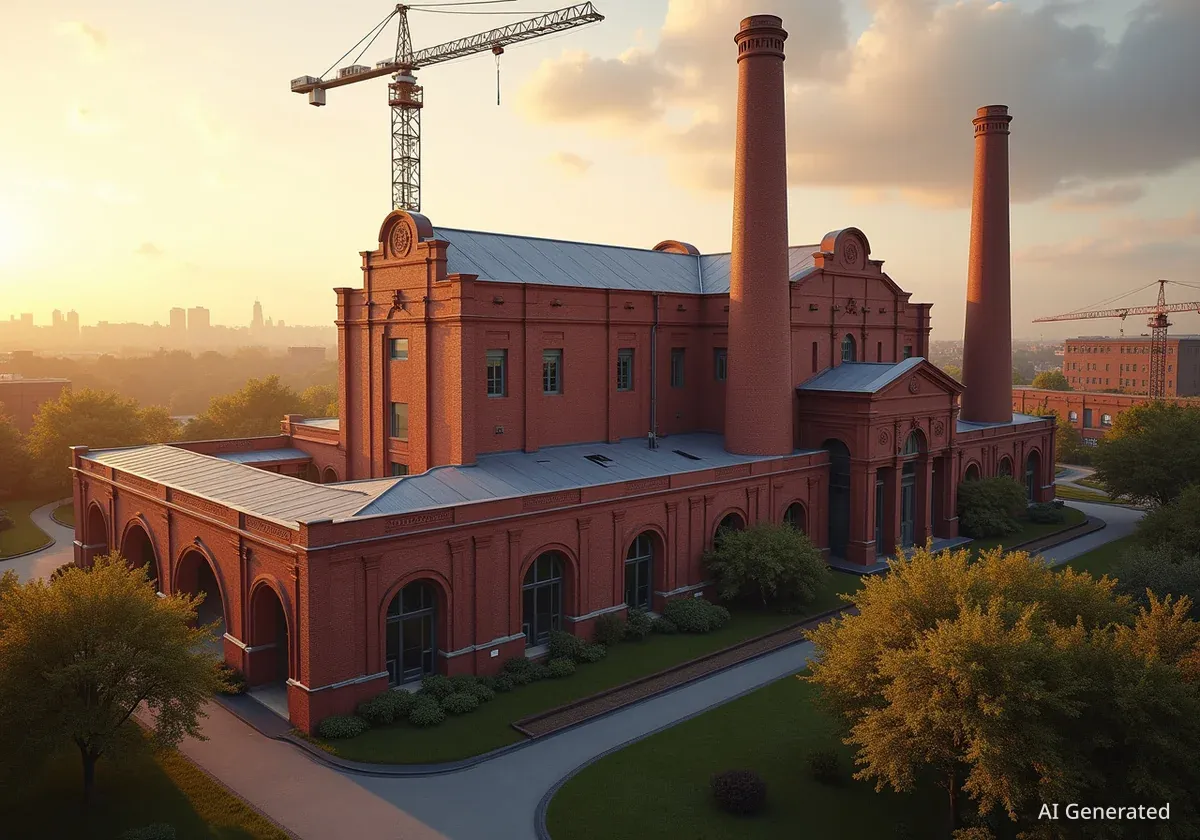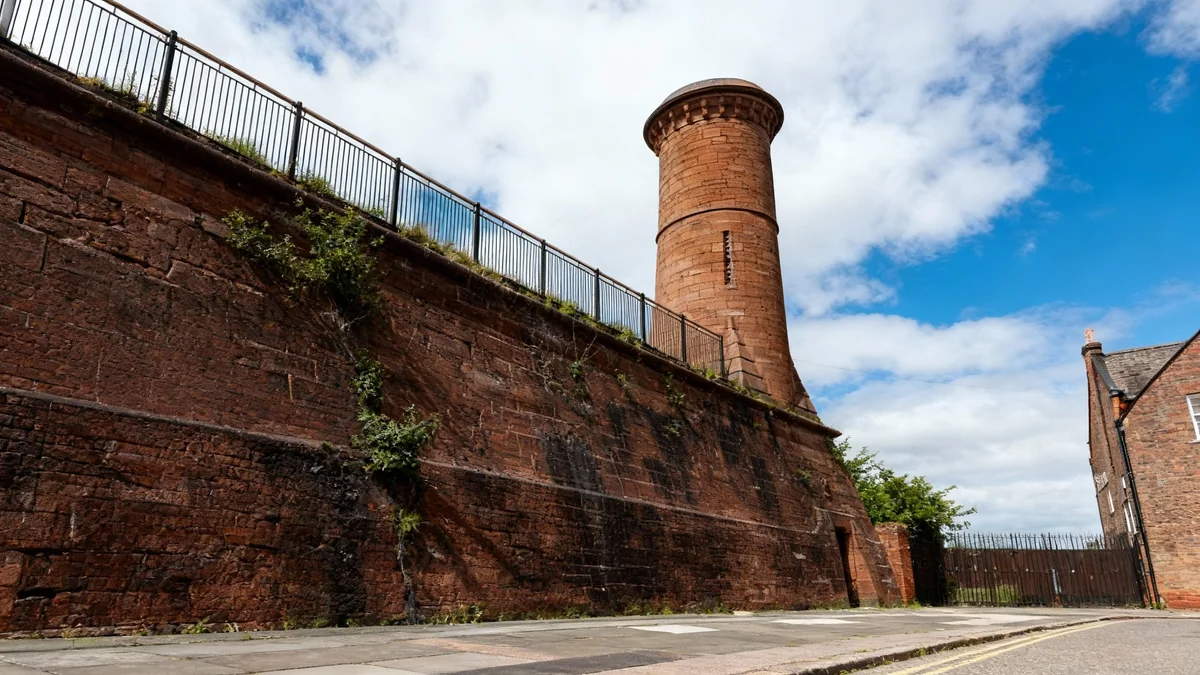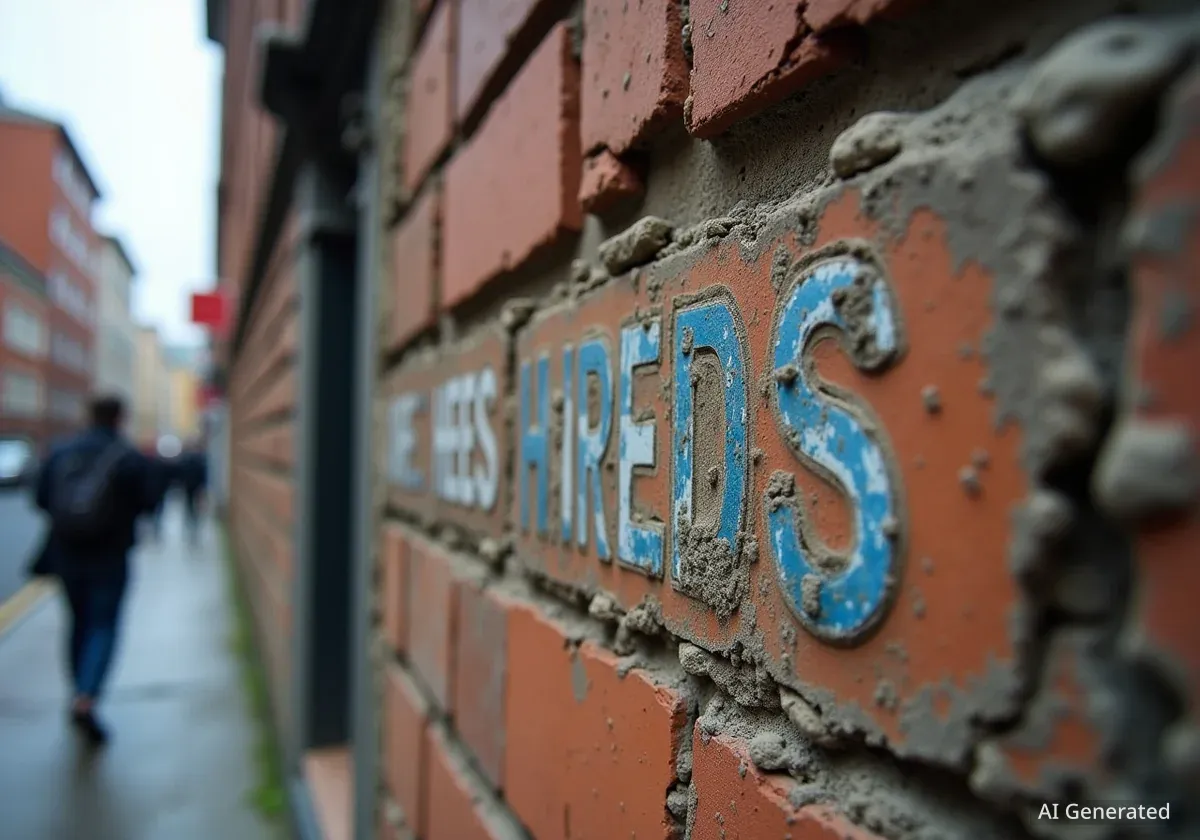A landmark of Liverpool's industrial past, the iconic Hartley's jam factory in Aintree, is being pulled back from the brink of ruin. In a remarkable collaboration between residents and developers, a multi-million-pound investment is breathing new life into the derelict Victorian site, promising to transform a piece of cherished history into a vibrant hub for the future.
For decades, the sprawling factory village, once a bustling center of production for Sir William Hartley's world-famous preserves, succumbed to decay. Now, the hum of construction has replaced the silence, signaling a meticulous restoration that honors its storied past while paving the way for new economic growth.
Key Takeaways
- A multi-million-pound investment by Centaur Property Group is funding the full restoration of the historic Hartley's jam factory site in Aintree.
- The project is a close collaboration between the developer and the Hartley’s Village Residence Association, ensuring historical accuracy is maintained.
- Phase one, the critical restoration of the factory chimney, is complete. Work is now focused on renovating buildings along Sugar Street and Hartley Avenue.
- The restored site will primarily feature modern office and retail spaces, with a completion target set for the end of 2024.
- This restoration is seen as a catalyst for broader regeneration in the Hartley's Village area, aiming to bring new jobs and businesses to the community.
A Race Against Time to Save a Landmark
The journey to this point has been a long and arduous one. After jam production ceased, the remaining buildings on the site fell into such a severe state of disrepair that they were placed on the English Heritage 'Heritage At Risk' register. The threat of demolition loomed over what was left of the once-thriving industrial village.
However, a determined community refused to let their heritage crumble. The formation of the Hartley Village Heritage Council in 2009, and later the current residents' association, marked a turning point. Their persistent efforts successfully secured conservation status for the area approximately a decade ago, laying the groundwork for a future revival.
"Community was always a big thread through the village’s history and it’s still a huge part of what makes it unique today," explains Stephen Lancaster-Frankland, chairman of the Hartley’s Village Residence Association. "As a residents’ association we maintain that community aspect, and now more importantly we’re trying to restore lost period features."
The Turning Point: A New Partnership
The catalyst for the current large-scale restoration arrived in 2023 when the site was cleared of its remaining tenants. This created a blank canvas for developer Centaur Property Group, which stepped in with a vision that aligned with the residents' ambitions.
According to Lancaster-Frankland, a crucial meeting in June 2023 between the residents, Centaur's managing director, and a council heritage officer set the project on its current path. By November 2023, a site contractor was engaged to undertake a full and faithful restoration of the entire factory complex.
From 'At Risk' to Revival
The English Heritage 'Heritage At Risk' register is a program that identifies and protects historic sites most at risk of being lost as a result of neglect, decay, or inappropriate development. The inclusion of Hartley's Village on this list highlighted the urgent need for intervention and was a critical factor in mobilizing support for its preservation.
Meticulous Restoration: Honouring the Past
The restoration is far more than a simple renovation; it's an archaeological-like effort to peel back decades of neglect and modern alterations to reveal the site's original Victorian character. The first priority was the stabilization and repair of the factory's iconic chimney, a project that began early in the year and was completed within four months to an exceptionally high standard.
"That was a high priority because it was so structurally damaged it would have been under threat of demolition if it was left," Lancaster-Frankland notes. "The difference is unbelievable."
A Monumental Task
One of the most significant challenges for the construction team has been the removal of mountains of invasive vegetation. This complex process involves more than just cutting back overgrowth; it requires dismantling sections of brickwork to extract deep-rooted plants and treating the area to prevent their return, a testament to the level of detail involved.
Authenticity in Every Brick
With the chimney secure, attention has shifted to the buildings lining Sugar Street—where fruit once arrived for processing—and the main frontage on Hartley Avenue. The goal is to restore these structures as closely as possible to their original appearance. Where original features are beyond repair, they will be replaced with like-for-like replicas.
This commitment to authenticity extends to every detail:
- The Main Gates: The grand factory gates will be fully restored, complete with their original turrets, new Victorian-style gates, and period-appropriate carriage lighting.
- Historical References: The residents' association has provided the contractors with a wealth of historic photographs, which are being studied carefully to ensure accuracy.
- Interior Preservation: Wherever possible, original internal features like ironwork and architectural details are being salvaged and incorporated into the new designs.
A Glimpse into a Pioneering Past
Founded in the late 1880s, Hartley's Village was a pioneering concept, a self-contained community built by Sir William Hartley for his workers. Often described as a "mini Port Sunlight," it was a model of industrial philanthropy. The site handled every aspect of jam production, from the delivery of fruit by rail and road to manufacturing, jarring, and distribution.
Adjacent to the factory, the village provided quality housing for its employees. It even featured a central square with recreational facilities, including tennis courts and bowling greens, fostering a strong sense of community that residents are keen to revive.
Sadly, not all of the original site could be saved. Key warehouses, including one with a distinctive clock tower, were demolished in the 1970s, a loss that makes the preservation of the remaining buildings even more critical.
A New Chapter for Aintree
With a completion date targeted for the end of 2024, the restored factory buildings are set to house a mix of modern office spaces and retail units. This new commercial activity is expected to inject fresh vitality into the area, creating jobs and attracting new businesses.
For the residents, this project is more than just about saving old buildings; it's about securing the future of their unique village. They see the factory's revival as the cornerstone of a wider regeneration effort for the entire Hartley's Village community.
"We understand the key to getting anything else achieved for the wider village would be seeing the factory site restored to its former glory," says Lancaster-Frankland. "This restoration means not only will a piece of Liverpool’s industrial history be preserved, it will also bring new business and job opportunities, and growth for the area."
The project stands as a powerful example of what can be achieved when developers and communities work together. As the scaffolding comes down and the restored brickwork is revealed, the legacy of Hartley's jam is being preserved not in jars, but in the very fabric of the community it created over a century ago.





